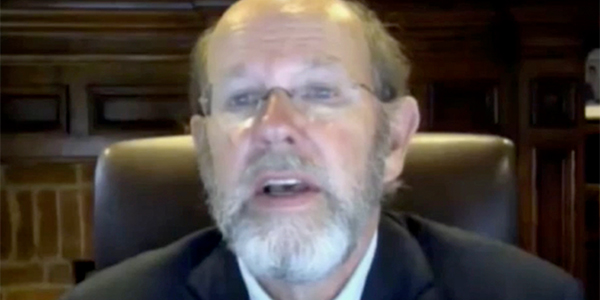Participants in the first panel of FERC’s two-day technical conference on the long-term impacts of the COVID-19 pandemic struck a hopeful tone Wednesday on the resilience of the North American energy industry.
But they also warned that caution is still needed even as some utilities prepare to return to normal operations.
Uneven Virus Recovery Stalls Returns

Speaking on the “System Operations and Planning Challenges” panel, TC Energy CEO Stanley Chapman observed that the uneven pace of recovery from the pandemic can create difficulties for utilities, especially those with geographically widespread operations. Shifting circumstances on the ground mean that applying a uniform reopening plan across an entity’s footprint may not be practical.
“Mexico City is having a huge [growth in] cases with respect to COVID-19, and as a matter of fact, as we go through our return-to-office plans — [which] we’re going to implement for 25% of employees in Calgary on July 15 — we’re not going to implement [them] in Mexico City given the number of cases,” Chapman said. “Even if you look at things just within the U.S. [itself], we’re not going to reopen the Houston office on July 15 as we had planned, given the large number of COVID cases that we’re seeing in Houston.”
These ongoing issues are not only a challenge for returning workers to the office; field employees run the risk of infection as well. While panelists applauded frontline workers for sacrificing time with their families to ensure the safety of the grid — with several noting that their employees had volunteered for the duty knowing the dangers — they also stressed that the skill of these workers meant their loss to infection would cause major strains on operations.
Utilities Prioritize Worker Safety
Ensuring the safety of frontline employees will be even harder amid the ongoing hurricane season, which industry representatives have already warned is likely to be more active than usual. (See Pandemic Adds to 2020 Hurricane Season Challenges.) Wildfires are also a concern this summer. In response, utilities have had to rethink how they implement their typical response plans.
“Making sure we can keep the men and women on the front lines safe and healthy … really is the heart of some of those new challenges,” said Stan Connally, executive vice president for operations at Southern Co. “Think of thousands of men and women coming together to respond to natural disasters, and we have typically housed, framed, oriented [and] fed those men and women in centralized ways. … Obviously that brings some risks to health and safety in our current pandemic, so our new protocols focus on decentralizing those operations.”
Along with the logistics of moving personnel into position, utilities have also had to grapple with the new challenge of ensuring adequate supply of materials they never considered necessary before, such as gloves, masks and other personal protective equipment (PPE). Operators are also looking beyond these immediate concerns and considering even bigger prospective challenges, which may be harder to address on an individual company basis.
“Early on in the process, hand sanitizer and PPE … were a little bit difficult to get our hands on, but that seems to have worked itself out over time,” Chapman said. “I would note, we’re part of a global supply chain. There are certain items that tend to be supplied disproportionately from one company or region of the world, and in those instances, we definitely need to take a step back and ensure that we have a broad supply of these … critical parts, and we’re not overly dependent on a region or country to supply them to us.”
Strengths, Weaknesses of Planning Exposed

Many participants praised the efforts of their staff to implement business continuity plans early in the outbreak. However, they also acknowledged that the arrival of an actual pandemic had exposed vulnerabilities — for example, in the increased risk from cyberattacks after many employees started working remotely — that they had not anticipated. Experts warned earlier this year that the outbreak had exposed the need for long-term focus on electronic security among critical infrastructure. (See Solarium Team Urges Long-term Cybersecurity Focus.)
Asked by Commissioner Richard Glick how NERC’s pandemic contingency plan — drafted in 2009 — had stood up to the COVID-19 outbreak, CEO Jim Robb admitted that while the plan had been useful as a foundation on which to build a response, on-the-ground solutions have often had to be devised from day to day as the circumstances evolved in unforeseen ways.
“That plan was … completely uninformed by the extraordinary circumstances that this COVID situation has presented, in terms of its breadth and depth of the crisis it’s created in certain geographies,” Robb replied. “That plan served us and the industry well, in terms of the basics that needed to be done, but I think it would be very fair and self-critical to say [that] … in many ways we’ve been at some level building the plane as we’re flying it.”



